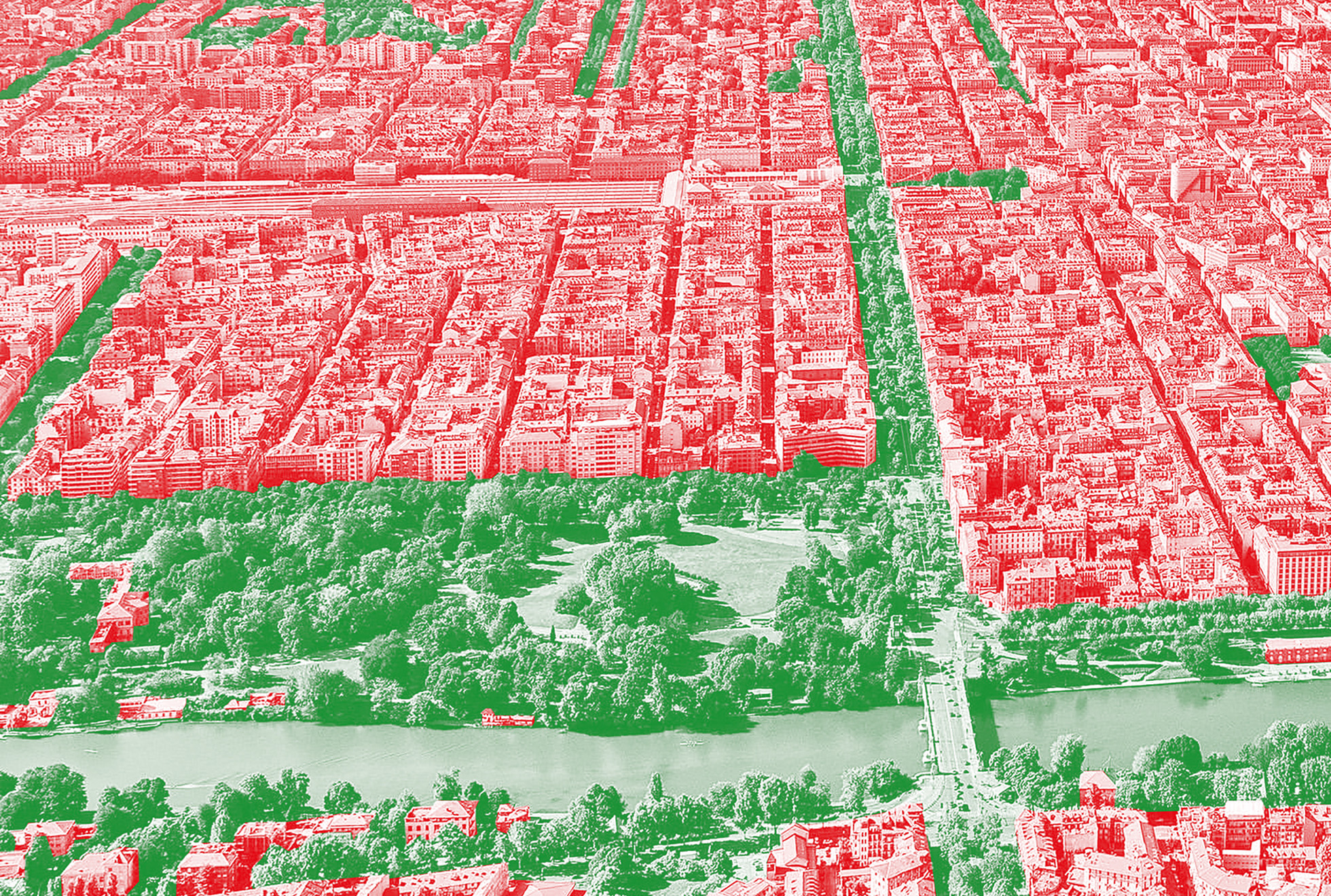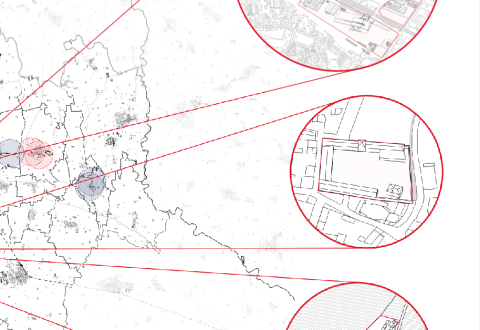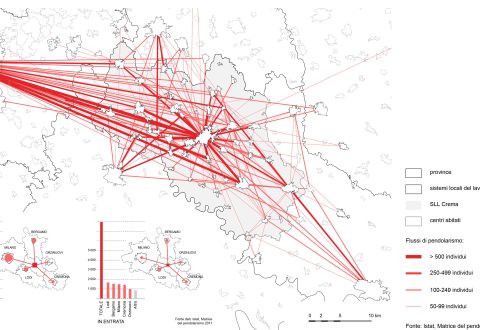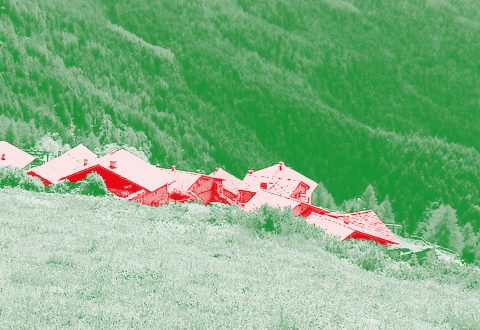tM+ Torino Metropoli Aumentata
Piano Strategico Metropolitano 2021-2023
Torino Metropoli Aumentata (Turin Augmented Metropolis) is the concise, clear and communicable title that sums up the vision proposed by the MSP for the future of the metropolitan city. The image of augmentation means the construction of a new alliance between the city of Turin and its region, based on integration and complementarity, rather than opposition and otherness. Augmentation is determined by an updated interpretation of the concept of rebalancing, meant not as uniformity but as the enhancement of the differences and specificities of each metropolitan area. Augmentation is the transition towards a post-Fordist and post-pandemic metropolis, which harmoniously combines the natural and artificial environment, developing the potential of both to build equity, well-being and sustainability.
Year
2021
Scientific coordinator
Scientific managers
Nicola Russi, Francesca Governa, Giuseppe Scellato, Stefania Ravazzi (UniTo), Matteo Tabasso (LINKS Foundation), Alessandro Portinaro (LINKS Foundation), Giulia Melis (LINKS Foundation)
Team
Lucia Baima, Marco Cappellazzo, Francesca Frassoldati, Luca Galleano, Maria Paola Repellino, Giulia Sammartano, Nannina Spanò, Alberto Artuso, Alessandro Benetti, Chiara Dereani, Ludovica Not, Simone Vegliò
Project manager
In collaboration with
Commissioned by
Tags
#Urbanism #TransformativeUrbanism
Type
Technology transfer

⁕ PDF available here
The Metropolitan Strategic Plan (2021-2023) faces a global challenge: the definition of a new balance between city and region, development and environment. At the same time, it interprets this challenge starting from a critical comparison with the local situation of the Metropolitan City of Turin, which is specific and exceptional compared to all other similar administrative entities in Italy. Turin is the Italian metropolitan city that includes the greatest variety of regions within its boundaries, since it is a metropolitan city of the plain, a metropolitan city of the hills and a metropolitan city of the mountains. This regional diversity gives rise to unprecedented potential, which the MSP aims to exploit, systematise and implement.
In order to realise this vision, the MSP proposes a substantial paradigm shift, giving a new centrality to basic infrastructure over sectoral policies. New tangible and intangible infrastructures support hybrid forms of connection and mobility, which are the fundamental prerequisite for quality diffusion in all the regions of the augmented metropolis. The MSP’s challenge is to ensure equal rights and equal opportunities for citizenship for all its inhabitants in every point of the metropolitan city.
The vision of Torino Metropoli Aumentata is structured within the six programme points of Next Generation EU, in line with the objectives defined by the Italian Recovery and Resilience Plan. The MSP pragmatically organises its objectives around the funding structure that will make them possible. It also identifies the objectives of the European cohesion policy and the sectoral programmes that might contribute to completing individual actions. Above all, it includes the affinity of its own highly cultural approach with that underlying the European document, committed to local implementation of the large-scale, long-term continental vision it proposes.
The MSP is arranged into six areas: a more productive and innovative Turin Metropolis (digitalisation, innovation, competitiveness and culture); a greener and more ecological Turin Metropolis (green revolution and ecological transition); a more mobile, accessible and connected Turin Metropolis (infrastructures for sustainable mobility); a Turin Metropolis that learns more (education and research); a more attractive, fair and equal Turin Metropolis (inclusion and cohesion); a healthier Turin Metropolis (healthcare).
This framework supports a complex but clearly hierarchical, three-level articulation. Each axis includes a series of strategies and each strategy unfolds into a series of actions to be implemented. In total, the MSP proposes 24 strategies and 111 actions to augment Turin. This three-part structure underlines the importance of coherence between objectives, policies and actions. The transformation of the metropolitan city can be effectively and positively oriented only through a solid and continuously verified connection between these three scales.
A more productive and innovative Turin Metropolis
The axis dedicated to augmenting the capacity to create value in the various economic sectors (agriculture, tourism, manufacturing, services, trade, public administration) through technology transfer, digitalisation, automation, cooperation in business networks, the construction of supply chains, process and product innovation and the promotion of the region and its products. It thus aims to augment the number of job and business opportunities and the attractiveness of the Turin metropolitan system for new initiatives and investments.
A greener and more ecological Turin Metropolis
This includes all the actions aimed at augmenting the ecological, environmental and landscape quality of the metropolitan area. These actions aim to reduce its ecological footprint, redefining its metabolic processes in a circular way and thus contributing through local actions to the global challenge of climate change.
A more mobile, accessible and connected Turin Metropolis
This suggests seizing the opportunity of the transformation of remote working commuting routines to improve connectivity and accessibility to and from the metropolitan region. It imagines the augmented metropolis as a ‘90-minutes metropolis’ made up of ‘15-minute cities’, where the ease and comfort of intermodal transport are ensured by an integrated and user-oriented MAAS (Mobility-as-a-Service) model. It promotes a differentiated use of collective transport over medium and long distances and of alternatives to the private car over medium and short distances. It projects connections outside the metropolitan area with the rest of northern Italy and the global world beyond the Alps, making gateways of metropolitan interest more accessible from all points in the region.
A Turin Metropolis that learns more
This axis stresses that it is essential to invest in the structural renewal of the metropolitan school infrastructure, in terms of buildings and the spatial model of education. It proposes seizing the opportunities experienced with distance learning during the pandemic and hybridising them with the quality of traditional teaching. It includes a series of actions aimed at strengthening and innovating vocational training, both at upper secondary school and university level. It emphasises the centrality of vocational degree courses, to be put into a system with proposals for lifelong learning and re-training of the already active workforce. It promotes and disseminates hands-on approaches to teaching, including in non-professional areas, as well as early schooling, with a view to gender balance, experimenting with hybrid forms of decentralised/autonomous management. It promotes relations between schools and the region in all contexts, making the school infrastructure a civic multi-service platform.
A more attractive, fair and equal Turin Metropolis
This aims to promote equal opportunities for personal and community development in the different parts of the region and for the entire population of the metropolitan city, so as to make it attractive again for residents and businesses. It includes actions aimed at introducing and supporting new forms of social housing and community residence, adapted to the specificities of the different local contexts, which can bring new inhabitants to areas with weak demographics, as well as prevent and recover situations of social exclusion. It suggests experimenting with and encouraging dual forms of metropolitan residence to strengthen links between the centre and peripheral areas.
A healthier Turin Metropolis
Starting with the centrality of the new Turin City of Health, investment in an integrated regional system of education, prevention and diagnosis which promotes equal accessibility of the health system throughout the region is proposed. This includes the possibilities of telemedicine and remote diagnostics. Its actions encourage making the environmental quality of the metropolitan city an active public health factor and an enabling infrastructure for a healthy and active lifestyle, as well as promoting health education, supporting active ageing, the social role of the elderly and intergenerational links.


